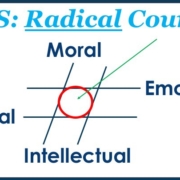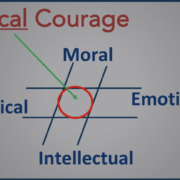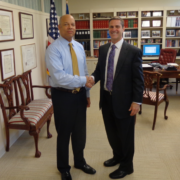Are Battlefield Lessons Useless to Business and Nonprofit Leaders?

Are Battlefield Lessons Useless to Business and Nonprofit Leaders?
Dear Business and Nonprofit Leaders,
Your instincts are right: many so-called battlefield lessons are useless for you and your team. Stories of hardship, heroism, and sacrifice might be inspiring, but their practical utility is often minimal. This is because those lessons haven’t been tailored to your organization’s needs.
Those of us offering insights from a military perspective must work harder to understand issues through your lens and present feasible, practical, and implementable ideas. Our failure to customize military leadership lessons to your needs has, understandably, resulted in waning enthusiasm. If the trend continues, the pendulum may complete its swing toward the view that military experience is interesting but irrelevant.
But battlefield lessons are useful to non-military contexts; the right framing just hasn’t been applied to them. Let’s take a few common examples and provide some simple ways to make them more relevant to you.
Staff Rides and Battlefield Tours.
Militaries have long used staff rides as part of leader education; I used them several times in my commands. A group of leaders or students studies a particular battle in advance and then takes a trip to the actual grounds to discuss what happened there, why it happened, and what lessons they can learn. Done correctly, staff rides can have a tremendous impact.
Battlefield tours for business leaders are less useful because they normally devolve into sightseeing. In most cases, the military tour guide explains in great detail what happened at each point in the battle and then challenges the audience to determine how to build agile leaders, good decision-makers, expert planners, and so forth. The absence of context and a clear connection to the audience’s contemporary challenges undermine the business utility of this leader development experience.
What to look for.
Find programs that focus on learning about you before offering advice. The best ones begin with an assessment that helps you and your leaders see your salient challenges and opportunities. Next, they should coordinate learning objectives and preparation work, such as readings and individual research. On the battlefield or historical site, the emphasis needs to be on linking key lessons to your business challenges.
Boot camps.
For the military, boot camps and other forms of initial entry training are essential parts of transforming civilians into soldiers, sailors, airmen, and marines. These intensive courses last several weeks and are often followed up by additional training before the service members arrive at their first organization. The development of military skills and values are essential for them to be able to function effectively in their first assignment. My initial training as an officer lasted nearly a year. Few businesses and nonprofits, of course, could devote even a fraction of that time for new employee education and training.
Leadership boot camps run by former service members may promise the same transformational results but in record time. Some leadership boot camps promise that a 3-day experience will result in a “quantum leap” in a leader’s performance. You know this is unlikely. Improvement is a long-term process that relies heavily on self-development: leaders sort through a wide array of concepts and ideas to determine what is most meaningful to them and then work on those attributes.
What to look for.
Assess what each workshop and boot camp is offering, and use common sense to determine its likely utility. These kinds of programs can be helpful, but anything that sounds too good to be true probably is. Workshops can play an important role in your team’s development. The best programs customize their workshops to your organization’s particular needs and objectives. Doing these as a team can have a much higher payoff than individual leader’s programs.
The boot camp analogy can be very useful in discussions about culture, too. Boot camps are part of the military’s onboarding process; how your organization onboards new employees is equally essential to sustaining your culture. Programs that help you define your culture, hire talented people who fit, onboard to set them up for success and continue their development on the job are likely to help you achieve high levels of employee engagement. [Did you know, according to Gallup, that nearly 2 of every 3 employees in America reports being unengaged at work?]
Strategic Planning.
“Plans are nothing, planning is everything” World War II Allied Supreme Commander General Dwight D. Eisenhower famously remarked. Good commanders drive their staff to identify possible contingencies, threats, and opportunities, and have branch plans or sequels to address each one of them. The planning process, in
military parlance, is never completed. Commanders often get detailed playbooks that aid decision-making for every permutation a creative staff (the strategic planners) can possibly think of in the time they are given to think. The results are often impressive.
The desire to bring the military-planning process to a business context is understandable. There’s one problem: very few businesses in the world can afford to have highly-skilled people spending all their time making detailed plans about things that will probably never happen. In fact, most businesses and nonprofits outsource their strategic planning. Here’s what you normally get: highly detailed plans that few employees have time to read. There is little to no sense of ownership. Even worse, your situation may be so dynamic that detailed plans soon become irrelevant. It is no wonder then that, according to one estimate, 90 percent of business plans are not executed. They gather dust. This might not be a big problem for the military, but it is for you.
What to look for.
Businesses and nonprofits that want to grow sustainably need both a strategy and a plan. A strategy helps you understand your situation, select a way forward to meet your goals, and manage a dynamic environment—to know when to stay on course and when to change. A plan helps you coordinate the activities of your team to implement your chosen way forward. With the right guidance, the best plans are ones written by your own team. If they have authorship over the plan, they are more likely to own and execute it.
Bottom line: the strategic plan can be counterproductive – a sort of reverse Goldilocks: not quite a strategy, not quite a plan, just plain ignored. Develop a sensible strategy and then put together an implementation plan that your team owns.
Is military experience useless for businesses and nonprofits?
Not at all. In fact, they can become an essential tool for organizations that feel stuck, want to implement change, or are trying to manage unexpected growth. Breakthrough insights, many leaders find, come from looking at your challenges from different points of view. Battlefield lessons can expand your perspective – your mental framework – and enable you to connect ideas from a different context that help your team grow sustainably.









